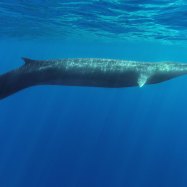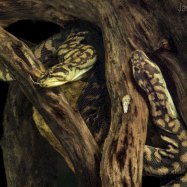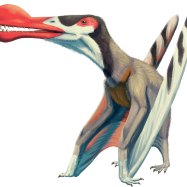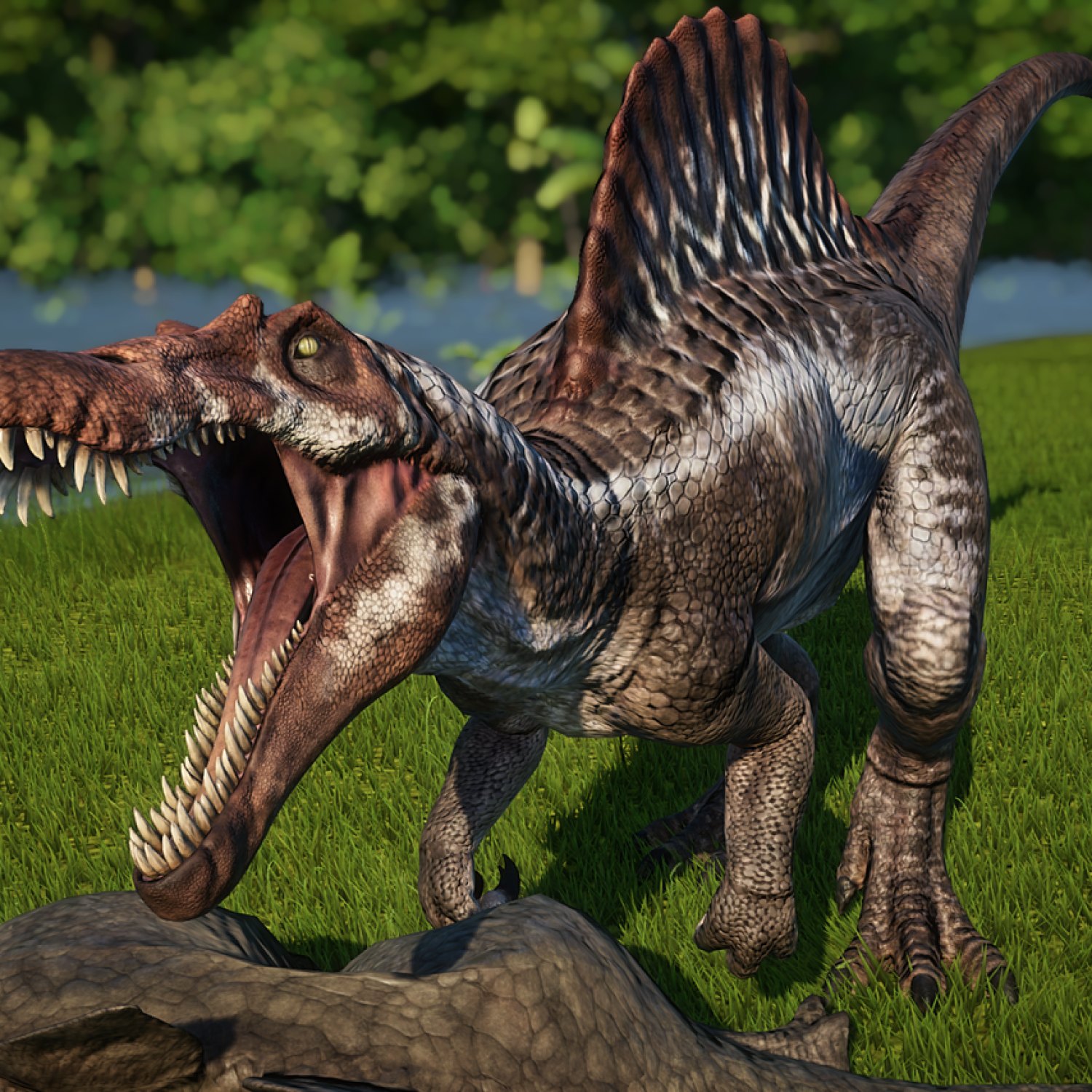
Spinosaurus
12-18 meters
The Spinosaurus, the largest carnivorous dinosaur, roamed the earth 95 million years ago. With a length of 12-18 meters and a distinctive sail on its back, this animal was a formidable predator. Fossils have been found in the Kem Kem Beds Formation and scientists believe it belonged to the Spinosauridae family. Its large, elongated body shape allowed for quick and agile movements, making it a top hunter during its time.
Animal Details Summary:
Common Name: Spinosaurus
Kingdom: Animalia
Habitat: Semi-aquatic
The Mighty Spinosaurus: Unleashing the Secrets of One of the Most Fascinating Dinosaurs in History
The world of dinosaurs is both mysterious and captivating. These long-extinct creatures have always managed to capture our imagination and fascination, with every new discovery shedding light on their incredible diversity and adaptations. Among these dinosaurs, one of the most intriguing and significant species is the Spinosaurus. This giant, semi-aquatic predator has a unique history and a remarkable set of characteristics that have left scientists and enthusiasts in awe Spinosaurus. So, let us dive into the world of the mighty Spinosaurus and uncover the secrets of this magnificent predator.Known as the "spine lizard," the Spinosaurus is a genus of large carnivorous dinosaurs that lived during the Late Cretaceous period, about 112 to 93.5 million years ago. Its scientific name, Spinosaurus aegyptiacus, translates to "Egyptian spine lizard" as it was first discovered in Egypt in 1912 by German paleontologist Ernst Stromer. However, the Spinosaurus was not fully known until almost a century later when new fossil discoveries and scientific research revealed its true nature.
A Unique Classification
The Spinosaurus belongs to the Animalia kingdom, the Chordata phylum, and the Reptilia class. Its classification becomes more intriguing at the order and family levels, where it is classified as a Saurischian dinosaur and a member of the Spinosauridae family.Saurischian dinosaurs are characterized by their lizard-like hip structure, and the Spinosaurus shares this feature with other known dinosaurs such as the Tyrannosaurus rex and the Velociraptor. On the other hand, the Spinosauridae family is unique as it contains a group of large, carnivorous, and semi-aquatic dinosaurs, including other closely related species such as the Baryonyx and Suchomimus Saarloos Wolfdog. This special family classification is significant, as it distinguishes the Spinosaurus from other well-known dinosaurs like the T. rex, which belongs to the Theropoda family.
The Fascinating Habitat of the Spinosaurus
The Spinosaurus inhabited the great continent of Gondwana, which included modern-day Africa and parts of South America, India, Australia, and Antarctica. Specifically, the Spinosaurus was found in the northern regions of Africa, making it one of the most well-known dinosaurs in the continent's history. Its primary location was in the Kem Kem Beds formation, a geological formation that spans from southern Morocco to southern Algeria.The Kem Kem Beds formation is a unique site as it has yielded numerous fossils of not only the Spinosaurus but also other dinosaurs and prehistoric creatures. These include the Carcharodontosaurus, a close relative of the T. rex, as well as pterosaurs, crocodilians, fish, and various marine creatures. This remarkable diversity indicates that the Kem Kem Beds were once home to a vast and diverse ecosystem, and the Spinosaurus was a top predator in this ancient world.
A Semi-Aquatic Lifestyle
Unlike other popular carnivorous dinosaurs such as the T. rex or the Allosaurus, the Spinosaurus had a unique adaptation that allowed it to thrive in both land and water. Its skeleton, with its long and narrow limbs, elongated body, and large sail on its back, suggests that the Spinosaurus was semi-aquatic.This means that the Spinosaurus was not only a fearsome hunter on land, but it was also highly adapted to life in the water. Its long limbs and sail would have made it an excellent swimmer, while its narrow snout and cone-shaped teeth would have allowed it to catch and eat aquatic prey such as fish, turtles, and even small dinosaurs that lived near the water's edge. This semi-aquatic lifestyle was a unique strategy among carnivorous dinosaurs and demonstrates the Spinosaurus' remarkable abilities.
The Carnivorous Nature of the Spinosaurus
The Spinosaurus was a ferocious predator that lived off a diet of other animals. Its sharp cone-shaped teeth and powerful jaws were adapted to tear and crush its prey, making it an efficient hunter. However, unlike other carnivorous dinosaurs that mainly hunted on land, the Spinosaurus had a more diverse hunting ground due to its semi-aquatic lifestyle. This allowed it to access a wider variety of food sources, making it one of the most adaptable predators of its time.Moreover, the Spinosaurus' diet may have changed depending on its location and environment. For instance, in the more inland regions of Africa, it may have primarily hunted land-based prey such as large herbivorous dinosaurs like the Paralititan. On the other hand, in the Kem Kem Beds formation near the sea, it may have had access to a plethora of aquatic prey, allowing it to feast on a variety of fish, turtles, and smaller dinosaurs.
The Elusive Coloration of the Spinosaurus
One of the most intriguing aspects of the Spinosaurus is its coloration. While most dinosaur reconstructions are based on educated guesses and scientific evidence, the color patterns of the Spinosaurus are yet to be confirmed. However, based on the presence of pigments in other fossils and comparisons to modern animals, scientists believe that it may have been reddish-brown in color. This would have helped it blend into its surroundings and make it less visible to its prey. However, further research is needed to confirm this assumption.The Giant Size of the Spinosaurus
The Spinosaurus was a formidable creature that could tower over other animals with its massive size. It is estimated that the Spinosaurus could reach lengths of up to 12 to 18 meters and weigh between 6 to 9.7 tonnes, making it one of the largest known carnivorous dinosaurs. Its long, elongated body and sail would have added to its intimidating appearance, making it a predator to be feared. Its size may have also been a key factor in its ability to catch different types of prey, as its massive jaws could have taken down prey much larger than itself.An Endless Fascination with the Spinosaurus
The Spinosaurus continues to be a subject of study and fascination among scientists and dinosaur enthusiasts. Its unique adaptations, semi-aquatic lifestyle, and massive size make it one of the most intriguing dinosaurs to have ever lived. However, despite the significant research done on this species, there is still so much to uncover about its behavior, appearance, and lifestyle. Hopefully, with continued discoveries and advancements in technology, we will one day uncover even more secrets of this remarkable creature and add to our understanding of the amazing world of dinosaurs.

Spinosaurus
Animal Details Spinosaurus - Scientific Name: Spinosaurus aegyptiacus
- Category: Animals S
- Scientific Name: Spinosaurus aegyptiacus
- Common Name: Spinosaurus
- Kingdom: Animalia
- Phylum: Chordata
- Class: Reptilia
- Order: Saurischia
- Family: Spinosauridae
- Habitat: Semi-aquatic
- Feeding Method: Carnivorous
- Geographical Distribution: Northern Africa
- Country of Origin: Egypt
- Location: Kem Kem Beds Formation
- Animal Coloration: Varies, possibly reddish-brown
- Body Shape: Large, elongated body with a sail on the back
- Length: 12-18 meters
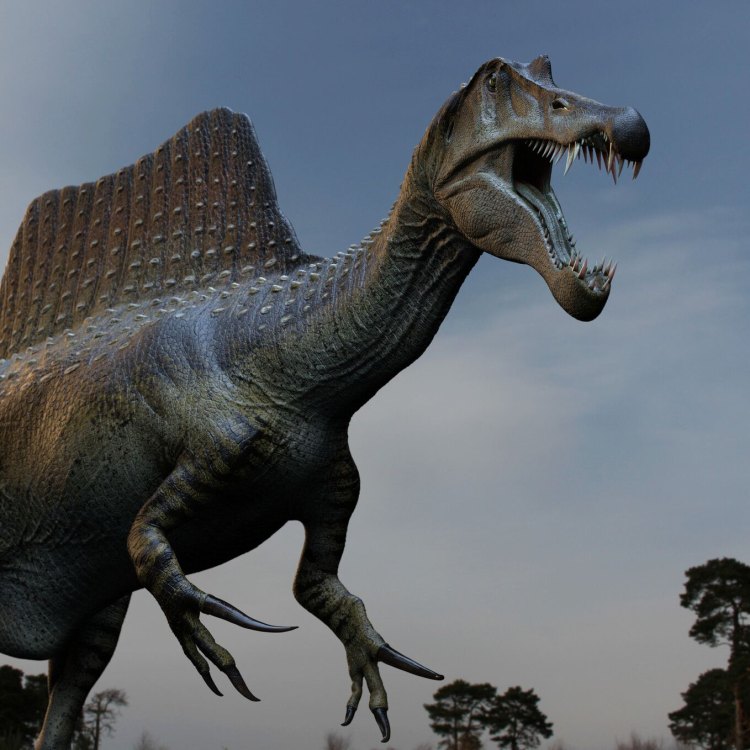
Spinosaurus
- Adult Size: Large
- Average Lifespan: Unknown
- Reproduction: Sexual
- Reproductive Behavior: Unknown
- Sound or Call: Unknown
- Migration Pattern: Unknown
- Social Groups: Likely solitary
- Behavior: Primarily aquatic, hunted fish and other large prey
- Threats: Extinction
- Conservation Status: Extinct
- Impact on Ecosystem: Top predator in its ecosystem
- Human Use: Subject of scientific study
- Distinctive Features: Long, crocodile-like snout, sail on the back
- Interesting Facts: The largest known carnivorous dinosaur species
- Predator: Apex predator, possibly hunted large aquatic prey
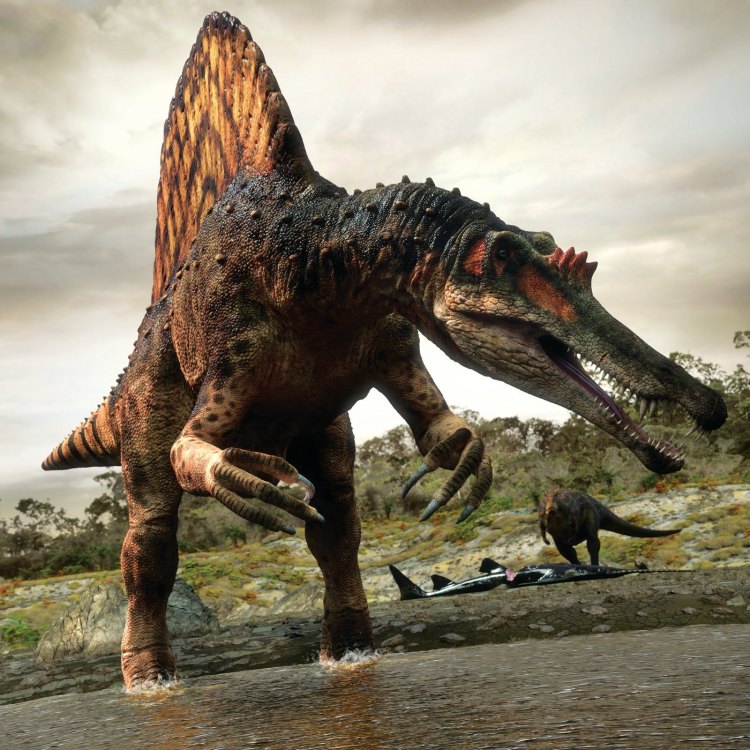
Spinosaurus aegyptiacus
Spinosaurus: The Aquatic Giant of the Dinosaur World
The world of dinosaurs is filled with fascinating creatures, each with their own unique features and behaviors. Among them, the Spinosaurus stands out as one of the most awe-inspiring and intriguing species. This large, carnivorous dinosaur roamed the Earth during the Cretaceous period, approximately 112-93 million years ago. But what sets this dinosaur apart from others? Let's dive into the details and discover the distinctive and fascinating features of the Spinosaurus PeaceOfAnimals.Com.An Enormous Size and Mysterious Lifespan
Spinosaurus was a true giant, measuring an impressive 50 feet in length and weighing an estimated 9 tons. This made it one of the largest known carnivorous dinosaur species, even surpassing the infamous Tyrannosaurus Rex in size. Its size was comparable to that of a school bus, making it a truly formidable predator.Despite intense research and excavations, the average lifespan of the Spinosaurs remains unknown. However, based on its size and lifestyle, scientists estimate that it could have lived up to 30 years.
Reproduction and Reproductive Behavior
Like most dinosaurs, the reproductive behavior of the Spinosaurus is still shrouded in mystery. However, one thing is known for sure – they reproduced sexually. This means that male and female Spinosauruses would mate to create offspring.The exact reproductive behaviors of this species remain unknown Scimitar Horned Oryx. However, some experts suggest that they may have built nests, similar to some modern-day reptiles, or laid their eggs in underground burrows.
The Unknown Sounds and Migration Patterns of Spinosaurus
Due to limited fossil evidence, it is difficult to determine the exact sounds made by the Spinosaurus. However, based on its close relative, the Baryonyx, scientists believe that it may have produced low, rumbling sounds with its large snout. These sounds may have been used for communication, much like modern-day crocodiles and alligators.Similarly, the migration patterns of the Spinosaurus remain a mystery. As an apex predator, it is believed that they may have roamed large territories in search of prey. However, whether they migrated seasonally or stayed in a specific area is still unknown.
A Solitary Lifestyle and Aquatic Behavior
It is believed that the Spinosaurus lived a solitary lifestyle, much like other large predators such as lions and tigers. This means that they primarily lived and hunted alone, with minimal interaction or social grouping.One of the most distinctive features of the Spinosaurus is its long, crocodile-like snout and the sail on its back. These features were not just for show; they served a purpose. The long snout was perfect for catching slippery fish, while the sail may have helped regulate the dinosaur's body temperature and provided protection against the scorching sun.
The Spinosaurus was also primarily aquatic, spending most of its time in and around bodies of water. It has been noted that its bone structure shows adaptations for swimming, such as dense bones for buoyancy and webbed feet for paddling. This suggests that it was a highly efficient and formidable swimmer, possibly surpassing modern-day crocodiles.
The Threats and Extinction of Spinosaurus
Despite being at the top of the food chain in its ecosystem, the Spinosaurus faced threats from other large predators such as the giant crocodile Sarcosuchus. However, it was not these predators that were responsible for the eventual extinction of the Spinosaurus.The cause of the Spinosaurus's extinction remains unknown, but many theories suggest that climate change and environmental degradation played a significant role. As the climate became drier and the environment changed, the Spinosaurus's primary food source – fish – may have become scarce, leading to its decline and eventual extinction.
The Impact on Ecosystem and Scientific Study
As an apex predator, the Spinosaurus played a crucial role in regulating the balance of its ecosystem. Its disappearance may have had a domino effect, causing other species to thrive or struggle to survive. This extinction also opened up niches for other predators to fill, bringing about significant changes to the ecosystem.Today, the Spinosaurus may be extinct, but it remains a subject of intense scientific study. Its unique features, behaviors, and lifestyle continue to captivate the minds of paleontologists and researchers. It has also been featured in popular culture, such as the blockbuster movie Jurassic Park III, further increasing its notoriety and interest.
In Conclusion
The Spinosaurus was a truly remarkable and impressive species that roamed the Earth millions of years ago. Its enormous size, aquatic behavior, and distinctive features made it stand out among other dinosaurs. While there are still many mysteries surrounding this prehistoric giant, it continues to fascinate and intrigue scientists and the public alike. The Spinosaurus will forever hold a special place in our imaginations and the history of Earth's most astonishing creatures.
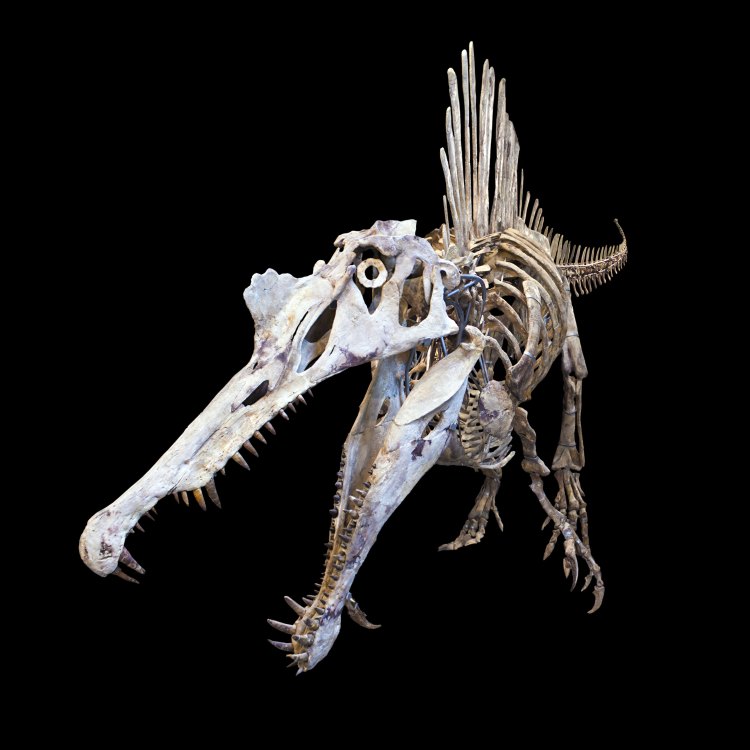
The Mighty Spinosaurus: Unleashing the Secrets of One of the Most Fascinating Dinosaurs in History
Disclaimer: The content provided is for informational purposes only. We cannot guarantee the accuracy of the information on this page 100%. All information provided here may change without prior notice.

